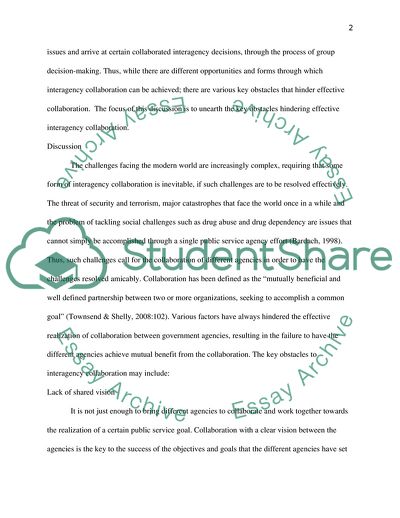Cite this document
(The Key Obstacles in Getting Agencies to Work Together Coursework Example | Topics and Well Written Essays - 3000 words, n.d.)
The Key Obstacles in Getting Agencies to Work Together Coursework Example | Topics and Well Written Essays - 3000 words. https://studentshare.org/social-science/1867962-public-management
The Key Obstacles in Getting Agencies to Work Together Coursework Example | Topics and Well Written Essays - 3000 words. https://studentshare.org/social-science/1867962-public-management
(The Key Obstacles in Getting Agencies to Work Together Coursework Example | Topics and Well Written Essays - 3000 Words)
The Key Obstacles in Getting Agencies to Work Together Coursework Example | Topics and Well Written Essays - 3000 Words. https://studentshare.org/social-science/1867962-public-management.
The Key Obstacles in Getting Agencies to Work Together Coursework Example | Topics and Well Written Essays - 3000 Words. https://studentshare.org/social-science/1867962-public-management.
“The Key Obstacles in Getting Agencies to Work Together Coursework Example | Topics and Well Written Essays - 3000 Words”. https://studentshare.org/social-science/1867962-public-management.


